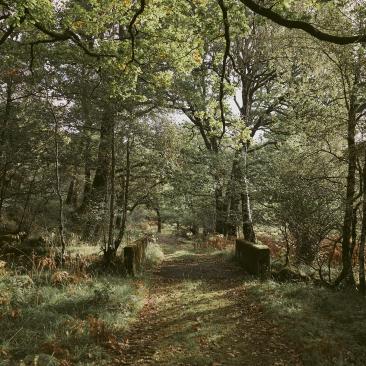
Many of the world’s forests are threatened by illegal logging and other harmful practices, with more than 12 million hectares of forest lost each year. Converting land for agriculture remains one of the biggest drivers of deforestation. When forests are destroyed and degraded they release carbon dioxide, approximately 13 per cent of annual carbon emissions are a result of deforestation. But forests can also be a climate solution.
Healthy, resilient forests are one of the most effective ways to combat climate change. They help to regulate the earth’s climate by absorbing carbon dioxide and storing it as carbon in the living wood, roots, leaves, within the soils and their associated vegetation. Forests also provide us with many other ecosystem services (the benefits humans derive from nature), helping to purify air and water, and to regulate water flow, helping us to adapt to the impacts of climate change, all whilst providing food and livelihoods to millions of people.
How does FSC help?
Sustainable forest management is a proven solution to tackle the climate emergency. According to the Intergovernmental Panel on Climate Change (IPCC), restoring and sustainably managing the world’s forests can help us remove the equivalent of all the carbon emitted by oil usage every year. With the world’s most rigorous forest management standards, FSC-certified forests provide multiple benefits for climate, nature, and society. The FSC system helps to mitigate climate change by promoting responsible forest management, preventing deforestation and degradation in certified forests, and by promoting the recycling of forest-based materials to extend the life of forest products.
When forests are responsibly managed, biodiversity is maintained, the plants and trees within them can extract more carbon dioxide and they can continually capture carbon while providing the countless materials we use every day.
FSC’s forest management standards give special attention to protecting the function of forests as net removers of CO2 from the atmosphere. For example, by requiring forest managers to leave fallen and decaying trees in the forest. This deadwood absorbs and stores additional carbon while providing essential deadwood habitat for insects and other wildlife.

Wood products and carbon storage
Forests are one of our most important resources, offering a renewable supply of the materials and goods we need for a more sustainable future. Harvesting wood and forest-products responsibly ensures forests are well looked after and it increases their value to society. Using wood from responsibly managed forests can also reduce our dependence on less sustainable materials like steel and concrete. In turn, these forest-based materials retain the carbon they capture even as they are used to build the furniture, buildings, and bridges we rely on. FSC's pioneering certification system, enables businesses and consumers to choose wood, paper and other forest products made with materials that support responsible forestry.

FSC Verified Impact
FSC has developed tools for rewarding forest owners and managers for the protection of forest ecosystem services, through FSC Verified Impact . This helps forest managers and owners to measure the benefits their forests provide, including carbon storage. As part of this procedure,FSC launched a carbon monitoring tool to give FSC certificate holders a cost-effective and practical way to assess the carbon captured and stored by their forests. Forests that measure carbon through this pioneering solution have already shown a 17 per cent average increase in carbon stocks over a management cycle. This means the forest’s ability to capture and store carbon increases if it is managed according to FSC’s forest management requirements.
FSC also supports forest owners and managers to protect, enhance, or restore water sources, soil health, and to reduce erosion and landslides. Forest owners and managers can use the results to make strong claims about their forests’ intangible values, which can help connect them with private sector sponsors to unlock financing to continue this work.
Find out more about FSC Verified Impact here.
